Engineering
-
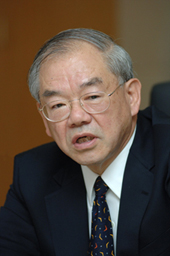 KAIST President Suh Honored with 2009 ASME Medal
KAIST President Nam-Pyo Suh has chosen as the 2009 winner of the ASME Medal presented by the American Society of Mechanical Engineers, university authorities said on Thursday (July 2).
President Suh received the honor for "seminal contributions to the advancement of engineering through research in tribology, polymer processing, metal processing, design and manufacturing, as well as contributions to engineering education and research infrastructure."
The selection of President Suh was unanimously approved by the 13-member Board of Governors of the ASME. Suh became the first scientist of Asian descent in the award"s 89-year-long history.
Founded in 1880, the ASME is a non-profit professional organization promoting the art, science and practice of mechanical and multidisciplinary engineering and allied sciences. The organization is known for setting codes and standards for mechanical devices. As of 2009, it has 120,000 members worldwide.
Only one ASME medal is awarded annually to recognize "eminently distinguished achievement." The award consists of a $17,000 honorarium, a gold medal, certificate and travel supplement for two days. It will be presented to President Suh during the 2009 International Mechanical Engineering Congress and Exposition, which will be held in Lake Buena Vista, Florida, November 13-10, 2009.
President Suh is an internationally known educator, engineer and inventor. Born in Korea, he immigrated to the U.S. in 1954 to join his father, who was teaching at Harvard. He earned both his bachelor"s and master"s degrees from MIT before coming to Carnegie Tech for his doctoral education in mechanical engineering.
While teaching at MIT, he founded the MIT-Industry Polymer Processing Program in 1973 and the Laboratory for Manufacturing and Productivity. He left these positions in 1984 to serve with the U.S. National Science Foundation as its assistant director for engineering, until 1988.
He invented many new materials, products and manufacturing processes, earning more than 60 U. S. patents and founding several companies. He has written seven books and more than 300 scholarly papers. Among dozens of honors throughout his career, President Suh most recently received the 2007 Lifetime Achievement from the Society of Plastics Engineers.
The ASME conducts one of the world"s largest technical publishing operations through its ASME Press, holds numerous technical conferences and hundreds of professional development courses each year, and sponsors numerous outreach and educational programs.
2009.07.02 View 14506
KAIST President Suh Honored with 2009 ASME Medal
KAIST President Nam-Pyo Suh has chosen as the 2009 winner of the ASME Medal presented by the American Society of Mechanical Engineers, university authorities said on Thursday (July 2).
President Suh received the honor for "seminal contributions to the advancement of engineering through research in tribology, polymer processing, metal processing, design and manufacturing, as well as contributions to engineering education and research infrastructure."
The selection of President Suh was unanimously approved by the 13-member Board of Governors of the ASME. Suh became the first scientist of Asian descent in the award"s 89-year-long history.
Founded in 1880, the ASME is a non-profit professional organization promoting the art, science and practice of mechanical and multidisciplinary engineering and allied sciences. The organization is known for setting codes and standards for mechanical devices. As of 2009, it has 120,000 members worldwide.
Only one ASME medal is awarded annually to recognize "eminently distinguished achievement." The award consists of a $17,000 honorarium, a gold medal, certificate and travel supplement for two days. It will be presented to President Suh during the 2009 International Mechanical Engineering Congress and Exposition, which will be held in Lake Buena Vista, Florida, November 13-10, 2009.
President Suh is an internationally known educator, engineer and inventor. Born in Korea, he immigrated to the U.S. in 1954 to join his father, who was teaching at Harvard. He earned both his bachelor"s and master"s degrees from MIT before coming to Carnegie Tech for his doctoral education in mechanical engineering.
While teaching at MIT, he founded the MIT-Industry Polymer Processing Program in 1973 and the Laboratory for Manufacturing and Productivity. He left these positions in 1984 to serve with the U.S. National Science Foundation as its assistant director for engineering, until 1988.
He invented many new materials, products and manufacturing processes, earning more than 60 U. S. patents and founding several companies. He has written seven books and more than 300 scholarly papers. Among dozens of honors throughout his career, President Suh most recently received the 2007 Lifetime Achievement from the Society of Plastics Engineers.
The ASME conducts one of the world"s largest technical publishing operations through its ASME Press, holds numerous technical conferences and hundreds of professional development courses each year, and sponsors numerous outreach and educational programs.
2009.07.02 View 14506 -
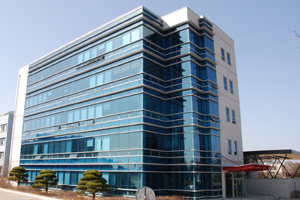 KAIST Dedicates Geocentrifuge Experiment Center
KAIST dedicated the KOCED Geo-Centrifuge Experiment Center for researches in monitoring natural disasters such as earthquake and embankment collapse through miniature simulation tests on Wednesday (April 9) after a two-year construction work.
The experiment center is part of the Korea Construction Engineering Development Collaboratory Program (KOCED) which has been sponsored by the Ministry of Land, Transport and Maritime Affairs to build an infrastructure for construction engineering researches at a national level. The ministry plans to build a total of 5 similar centers nationwide by the end of the year.
On hand at the dedication ceremony were Jae-Choon Lee, President of the Korea Institute of Construction & Transportation Technology Evaluation and Planning, KAIST President Nam-Pyo Suh, and scores of experts and administration officials.
The construction of the five-story building on an area of about 3,328 square meters cost 8.4 billion won (US$6.3 million).
The center is expected to serve as a major laboratory in the field of geotechnical engineering. It is equipped with such state-of-the-art facilities as geocentrifuge, a useful tool for studying flow in unsaturated soil under well-controlled, repeatable conditions, a bidirectional shaking-table that can reproduce earthquake-like wave; and robots that can reproduce construction procedures by remote control.
Geocentrifuge experiment allows detecting ground and structure motions easily and rapidly by simulation tests. Thus, it is widely used for various geotechnical engineering researches such as evaluation of seismic safety, soft ground movement, slope stability analysis, etc. The causes of the embankment collapse in New Orleans by Hurricane Katrina in 2005 were also revealed by the geocentrifuge experiment.
The geocentrifuge research facility is available for use by outside researchers, so scientists from other universities, research institutes and corporations can perform research and test their scientific and engineering hypotheses.
The center is divided into two sections, experiment building and research building. The experiment building is composed of a geocentrifuge laboratory, model-making rooms, workshops, a geotechnical engineering laboratory and specimen storehouse, while the research building has a control room, a video conference room, an electronic library and research rooms.
2009.04.09 View 13745
KAIST Dedicates Geocentrifuge Experiment Center
KAIST dedicated the KOCED Geo-Centrifuge Experiment Center for researches in monitoring natural disasters such as earthquake and embankment collapse through miniature simulation tests on Wednesday (April 9) after a two-year construction work.
The experiment center is part of the Korea Construction Engineering Development Collaboratory Program (KOCED) which has been sponsored by the Ministry of Land, Transport and Maritime Affairs to build an infrastructure for construction engineering researches at a national level. The ministry plans to build a total of 5 similar centers nationwide by the end of the year.
On hand at the dedication ceremony were Jae-Choon Lee, President of the Korea Institute of Construction & Transportation Technology Evaluation and Planning, KAIST President Nam-Pyo Suh, and scores of experts and administration officials.
The construction of the five-story building on an area of about 3,328 square meters cost 8.4 billion won (US$6.3 million).
The center is expected to serve as a major laboratory in the field of geotechnical engineering. It is equipped with such state-of-the-art facilities as geocentrifuge, a useful tool for studying flow in unsaturated soil under well-controlled, repeatable conditions, a bidirectional shaking-table that can reproduce earthquake-like wave; and robots that can reproduce construction procedures by remote control.
Geocentrifuge experiment allows detecting ground and structure motions easily and rapidly by simulation tests. Thus, it is widely used for various geotechnical engineering researches such as evaluation of seismic safety, soft ground movement, slope stability analysis, etc. The causes of the embankment collapse in New Orleans by Hurricane Katrina in 2005 were also revealed by the geocentrifuge experiment.
The geocentrifuge research facility is available for use by outside researchers, so scientists from other universities, research institutes and corporations can perform research and test their scientific and engineering hypotheses.
The center is divided into two sections, experiment building and research building. The experiment building is composed of a geocentrifuge laboratory, model-making rooms, workshops, a geotechnical engineering laboratory and specimen storehouse, while the research building has a control room, a video conference room, an electronic library and research rooms.
2009.04.09 View 13745 -
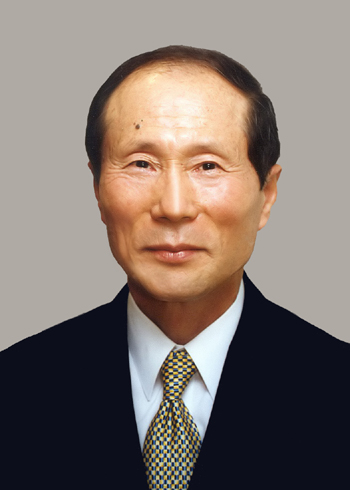 Respected Entrepreneur Chung Elected New Board Chairman of KAIST
Moon-Soul Chung, founder and former CEO of Mirae Corp. who is well known as the first-generation venture entrepreneur in Korea, was elected new chairman of the KAIST Board of Directors at the 193rd Regular Board Meeting held on March 20 in Seoul, school authorities announced Monday, March 23.
Born in 1938 in Imsil, North Jeolla Province, Chung graduated from the Oriental Philosophy Department of Won Kwang University. Chung founded Mirae Corp., a semiconductor equipment manufacturer, in 1983 and got his company listed on KOSDAQ and NASDAQ markets later. His business principles stressing transparency, integrity, and technology, earned the respect of Korean businesspeople.
In 2000, he suddenly announced retirement and handed over the presidency of his company to one of his managing directors. One year later, he donated 30 billion won to KAIST. It was by then the largest amount given by a single donor.
In 2007, he was awarded an honorary degree of doctor of engineering from KAIST. He formerly served as chairman of Venture Leaders Club, President CEO of Lycos Korea and chairman of the board of directors of Kookmin Bank.
2009.03.26 View 13989
Respected Entrepreneur Chung Elected New Board Chairman of KAIST
Moon-Soul Chung, founder and former CEO of Mirae Corp. who is well known as the first-generation venture entrepreneur in Korea, was elected new chairman of the KAIST Board of Directors at the 193rd Regular Board Meeting held on March 20 in Seoul, school authorities announced Monday, March 23.
Born in 1938 in Imsil, North Jeolla Province, Chung graduated from the Oriental Philosophy Department of Won Kwang University. Chung founded Mirae Corp., a semiconductor equipment manufacturer, in 1983 and got his company listed on KOSDAQ and NASDAQ markets later. His business principles stressing transparency, integrity, and technology, earned the respect of Korean businesspeople.
In 2000, he suddenly announced retirement and handed over the presidency of his company to one of his managing directors. One year later, he donated 30 billion won to KAIST. It was by then the largest amount given by a single donor.
In 2007, he was awarded an honorary degree of doctor of engineering from KAIST. He formerly served as chairman of Venture Leaders Club, President CEO of Lycos Korea and chairman of the board of directors of Kookmin Bank.
2009.03.26 View 13989 -
 Workshop on Biomedical IC to Be Held on March 26
KAIST will hold a workshop on "biomedical IC for future healthcare system" on March 26 at a lecture room of the School of Electrical Engineering & Computer Science. The workshop is organized by SEECS and the Korean Institute of Next Generation Computing.
At the workshop, a variety of new technologies expected to expedite the development of biomedical systems will be presented. KAIST Prof. Hoi-Jun Yoo will speak on the "body channel communication" using the human body as the signal transmission medium and Dr. Seung-Hwan Kim of Electronics and Telecommunications Research Institute (ETRI) on a wearable vital sign monitoring system.
Other subjects are CMOS (complementary metal-oxide semiconductor) fully electronic biosensor for biomolecular detection to be presented by KAIST Prof. Gyu-Hyeong Cho; nerve interface and IC (integrated circuit) system design by KAIST Prof. Yoon-gi Nam; design of neural recording and stimulation IC using time-varying magnetic field by KAIST Prof. Seong-Hwan Cho; low power multi-core digital signal processor for hearing aid by Dong-Wook Kim, senior researcher at the Samsung Advanced Institute of Technology; and a non-contact cardiac sensor by KAIST Prof. Seung-Chul Hong.
With the advent of the ageing society, medical expenses of the elderly people are rapidly increasing. As a way to address the issue, interests are growing in "ubiquitous healthcare," a technology that uses a large number of environmental and patient sensors and actuators to monitor and improve patients’ physical and mental condition.
The upcoming workshop is the first academic event on biomedical integrated chips to be held in Korea. The workshop will provide a valuable opportunity for experts in biomedical area to get together and examine the present status of Korean biomedical area and discuss about its future, KAIST officials said.
2009.03.20 View 19416
Workshop on Biomedical IC to Be Held on March 26
KAIST will hold a workshop on "biomedical IC for future healthcare system" on March 26 at a lecture room of the School of Electrical Engineering & Computer Science. The workshop is organized by SEECS and the Korean Institute of Next Generation Computing.
At the workshop, a variety of new technologies expected to expedite the development of biomedical systems will be presented. KAIST Prof. Hoi-Jun Yoo will speak on the "body channel communication" using the human body as the signal transmission medium and Dr. Seung-Hwan Kim of Electronics and Telecommunications Research Institute (ETRI) on a wearable vital sign monitoring system.
Other subjects are CMOS (complementary metal-oxide semiconductor) fully electronic biosensor for biomolecular detection to be presented by KAIST Prof. Gyu-Hyeong Cho; nerve interface and IC (integrated circuit) system design by KAIST Prof. Yoon-gi Nam; design of neural recording and stimulation IC using time-varying magnetic field by KAIST Prof. Seong-Hwan Cho; low power multi-core digital signal processor for hearing aid by Dong-Wook Kim, senior researcher at the Samsung Advanced Institute of Technology; and a non-contact cardiac sensor by KAIST Prof. Seung-Chul Hong.
With the advent of the ageing society, medical expenses of the elderly people are rapidly increasing. As a way to address the issue, interests are growing in "ubiquitous healthcare," a technology that uses a large number of environmental and patient sensors and actuators to monitor and improve patients’ physical and mental condition.
The upcoming workshop is the first academic event on biomedical integrated chips to be held in Korea. The workshop will provide a valuable opportunity for experts in biomedical area to get together and examine the present status of Korean biomedical area and discuss about its future, KAIST officials said.
2009.03.20 View 19416 -
 Five KAIST Students Offered Internship from Qualcomm
Qualcomm Inc., a wireless telecommunications research and development company based in San Diego, California, has offered internship for five KAIST students of the Department of Electrical Engineering and Computer Science, university authorities said on Monday (Jan. 5).
The five students who are graduate and doctoral students studying communication and RFID (radio frequency identification) design will be working for six months at Qualcomm"s RFIC (radio frequency integrated circuits) Department in Santa Clara, Calif., as co-researchers. These interns will receive about $7,000 a month each with other benefits.
It is the first time that Qualcomm has offered internship for students outside the U.S., according to external relations officials at KAIST. Students who have shown outstanding research output during the internship period will be offered employment at Qualcomm.
"Qualcomm"s internship for KAIST students is designed to help young Korean talents to become professionals who will lead global advancement in the IT sector and strengthen its research network with Korea," Seung-Soo Kim, senior director of Qualcomm Korea, was quoted as saying.
Qualcomm plans to continue providing internship program for KAIST students, as well as pursuing joint research initiatives, the officials said.
2009.01.08 View 16429
Five KAIST Students Offered Internship from Qualcomm
Qualcomm Inc., a wireless telecommunications research and development company based in San Diego, California, has offered internship for five KAIST students of the Department of Electrical Engineering and Computer Science, university authorities said on Monday (Jan. 5).
The five students who are graduate and doctoral students studying communication and RFID (radio frequency identification) design will be working for six months at Qualcomm"s RFIC (radio frequency integrated circuits) Department in Santa Clara, Calif., as co-researchers. These interns will receive about $7,000 a month each with other benefits.
It is the first time that Qualcomm has offered internship for students outside the U.S., according to external relations officials at KAIST. Students who have shown outstanding research output during the internship period will be offered employment at Qualcomm.
"Qualcomm"s internship for KAIST students is designed to help young Korean talents to become professionals who will lead global advancement in the IT sector and strengthen its research network with Korea," Seung-Soo Kim, senior director of Qualcomm Korea, was quoted as saying.
Qualcomm plans to continue providing internship program for KAIST students, as well as pursuing joint research initiatives, the officials said.
2009.01.08 View 16429 -
 Prof. Seong Publishes English Book on Reliability in Digital Control Systems
Prof. Poong-Hyun Seong of Department of Nuclear and Quantum Engineering has recently published an English-language book on reliability and risk issues in large scale safety-critical digital control systems used in complex facilities such as nuclear power plants.
The book entitled “Reliability and Risk Issues in Large Scale Safety-critical Digital Control Systems” is a result of Prof. Seong’s collaboration with some KAIST graduates who used to be under his guidance. The 303-page publication has been published by Springer, one of the world’s leading publishers of academic journals, as part of the Springer Series in Reliability Engineering.
The book consists of four parts; part I deals with issues related to hardware, part II software, part III human factors and finally the last part integrated systems. It can be purchased through some on-line book stores such as Amazon.com.
Prof. Seong served as an editor-in-chief for Nuclear Engineering and Technology (NET), an international journal of Korean Nuclear Society (KNS), from 2003 to 2008. He also worked as a chair of the Human Factors Division (HFD) of American Nuclear Society (ANS) from 2006 to 2007. Prof. Seong is now a commissioner of Korea Nuclear Safety Commission which is the nation’s highest committee on Nuclear Safety.
2008.12.26 View 17748
Prof. Seong Publishes English Book on Reliability in Digital Control Systems
Prof. Poong-Hyun Seong of Department of Nuclear and Quantum Engineering has recently published an English-language book on reliability and risk issues in large scale safety-critical digital control systems used in complex facilities such as nuclear power plants.
The book entitled “Reliability and Risk Issues in Large Scale Safety-critical Digital Control Systems” is a result of Prof. Seong’s collaboration with some KAIST graduates who used to be under his guidance. The 303-page publication has been published by Springer, one of the world’s leading publishers of academic journals, as part of the Springer Series in Reliability Engineering.
The book consists of four parts; part I deals with issues related to hardware, part II software, part III human factors and finally the last part integrated systems. It can be purchased through some on-line book stores such as Amazon.com.
Prof. Seong served as an editor-in-chief for Nuclear Engineering and Technology (NET), an international journal of Korean Nuclear Society (KNS), from 2003 to 2008. He also worked as a chair of the Human Factors Division (HFD) of American Nuclear Society (ANS) from 2006 to 2007. Prof. Seong is now a commissioner of Korea Nuclear Safety Commission which is the nation’s highest committee on Nuclear Safety.
2008.12.26 View 17748 -
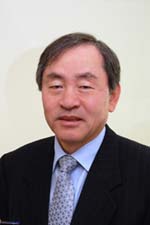 Prof. Cho Wins Best Paper Award
KAIST Prof. Nam-Zin Cho of the Department of Nuclear and Quantum Engineering, won the Best Thesis Award in the nuclear reactor physics category at the 2008 Winter Meeting of the American Nuclear Society held on Nov. 9-13 in Reno, Nevada.
His paper, entitled "Thermal Feedback Transient Analysis of a Pebble Fuel Based on the Two-Temperature Homogenized Model," was jointly authored by Hwi Yu and Jong-Un Kim under the guidance of Prof. Cho.
Prof. Cho was elected a fellow of the American Nuclear Society in 2001 and has served as the deputy editor of the Nuclear Science and Engineering, the research journal of the American Nuclear Society, since 1999.
2008.12.09 View 15564
Prof. Cho Wins Best Paper Award
KAIST Prof. Nam-Zin Cho of the Department of Nuclear and Quantum Engineering, won the Best Thesis Award in the nuclear reactor physics category at the 2008 Winter Meeting of the American Nuclear Society held on Nov. 9-13 in Reno, Nevada.
His paper, entitled "Thermal Feedback Transient Analysis of a Pebble Fuel Based on the Two-Temperature Homogenized Model," was jointly authored by Hwi Yu and Jong-Un Kim under the guidance of Prof. Cho.
Prof. Cho was elected a fellow of the American Nuclear Society in 2001 and has served as the deputy editor of the Nuclear Science and Engineering, the research journal of the American Nuclear Society, since 1999.
2008.12.09 View 15564 -
 2008 IEEE International Conference on Humanoid Robots Opens
The 2008 IEEE-RAS International Conference on Humanoid Robots, an international gathering to identify new research trends and technology in humanoid robotics, will open a three-day session on Monday (Dec. 1) at the Hotel Rivera and KAIST in Daejeon.
The annual conference is organized by KAIST and the Robotics and Automation Society of the Institute for Electric and Electronic Engineers, a U.S.-based international non-profit, professional organization for the advancement of technology related to electricity.
The conference is expected to draw a total of 200 robotics researchers from 19 different countries. Prof. Jun-Ho Oh, at the Department of Mechanical Engineering who led the creation of Korea"s first humanoid robot Hubo, is serving as general chair of the conference. Prof. Oh was named the host of the 2008 conference at the 2007 conference held at the Carnegie Melon University of the United States. The eight-year old conference was inaugurated in Boston in 2000.
On the opening day of Dec. 1, seven lectures will be given on diverse areas of robotics including cognitive humanoid vision, and robot vision sensor and sensing. On the subsequent two days, a total of 110 papers will be presented.
During the conference period, a variety of robots produced by six local and foreign robot makers will be on demonstration, providing opportunities for researchers and industrial robot makers to share technological ideas.
Highlights of the conference will be special lectures by world-renowned robot researchers Prof. Yoshiyuki Sankai of University of Tsukuba, who has created an exoskeletal "robot suit," and Prof. Art Kuo of Univerity of Michigan who is regarded as a leading authority in dynamic walking.
Following the conference, all participants are scheduled to tour Prof. Oh"s Hubo Lab and the Human-Robot Interaction Research Center, both located at KAIST.
2008.12.01 View 15640
2008 IEEE International Conference on Humanoid Robots Opens
The 2008 IEEE-RAS International Conference on Humanoid Robots, an international gathering to identify new research trends and technology in humanoid robotics, will open a three-day session on Monday (Dec. 1) at the Hotel Rivera and KAIST in Daejeon.
The annual conference is organized by KAIST and the Robotics and Automation Society of the Institute for Electric and Electronic Engineers, a U.S.-based international non-profit, professional organization for the advancement of technology related to electricity.
The conference is expected to draw a total of 200 robotics researchers from 19 different countries. Prof. Jun-Ho Oh, at the Department of Mechanical Engineering who led the creation of Korea"s first humanoid robot Hubo, is serving as general chair of the conference. Prof. Oh was named the host of the 2008 conference at the 2007 conference held at the Carnegie Melon University of the United States. The eight-year old conference was inaugurated in Boston in 2000.
On the opening day of Dec. 1, seven lectures will be given on diverse areas of robotics including cognitive humanoid vision, and robot vision sensor and sensing. On the subsequent two days, a total of 110 papers will be presented.
During the conference period, a variety of robots produced by six local and foreign robot makers will be on demonstration, providing opportunities for researchers and industrial robot makers to share technological ideas.
Highlights of the conference will be special lectures by world-renowned robot researchers Prof. Yoshiyuki Sankai of University of Tsukuba, who has created an exoskeletal "robot suit," and Prof. Art Kuo of Univerity of Michigan who is regarded as a leading authority in dynamic walking.
Following the conference, all participants are scheduled to tour Prof. Oh"s Hubo Lab and the Human-Robot Interaction Research Center, both located at KAIST.
2008.12.01 View 15640 -
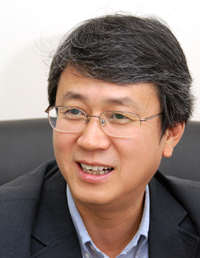 KAIST Team Identifies Nano-scale Origin of Toughness in Rare Earth-added Silicon Carbide
A research team led by Prof. Do-Kyung Kim of the Department of Materials Science and Engineering of KAIST has identified the nano-scale origin of the toughness in rare-earth doped silicon carbide (RE-SiC), university sources said on Monday (Oct. 6).
The research was conducted jointly with a U.S. team headed by Prof. R. O. Ritchie of the Department of Materials Science and Engineering, University of California, Berkeley.
The findings were carried in the online edition of Nano Letters published by the American Chemical Association.
Silicon carbide, a ceramic material known to be one of the hardest substances, are potential candidate materials for many ultrahigh-temperature structural applications. For example, if SiC, instead of metallic alloys, is used in gas-turbine engines for power generation and aerospace applications, operating temperatures of many hundred degrees higher can be obtained with a consequent dramatic increase in thermodynamic efficiency and reduced fuel consumption. However, the use of such ceramic materials has so far been severely limited since the origin of the toughness in RE-SiC remained unknown thus far.
In order to investigate the origin of the toughness in RE-SiC, the researchers attempted to examine the mechanistic nature of the cracking events, which they found to occur precisely along the interface between SiC grains and the nano-scale grain-boundary phase, by using ultrahigh-resolution transmission electron microscopy and atomic-scale spectroscopy. The research found that for optimal toughness, the relative elastic modulus across the grain-boundary phase and the interfacial fracture toughness are the most critical material parameters; both can be altered with appropriate choice of rare-earth elements.
In addition to identifying the nano-scale origin of the toughness in RE-SiC, the findings also contributed to precisely predicting how the use of various rare-earth elements lead to difference in toughness.
University sources said that the findings will significantly advance the date when RE-SiC will replace metallic alloys in gas-turbine engines for power generation and aerospace applications.
2008.10.08 View 16241
KAIST Team Identifies Nano-scale Origin of Toughness in Rare Earth-added Silicon Carbide
A research team led by Prof. Do-Kyung Kim of the Department of Materials Science and Engineering of KAIST has identified the nano-scale origin of the toughness in rare-earth doped silicon carbide (RE-SiC), university sources said on Monday (Oct. 6).
The research was conducted jointly with a U.S. team headed by Prof. R. O. Ritchie of the Department of Materials Science and Engineering, University of California, Berkeley.
The findings were carried in the online edition of Nano Letters published by the American Chemical Association.
Silicon carbide, a ceramic material known to be one of the hardest substances, are potential candidate materials for many ultrahigh-temperature structural applications. For example, if SiC, instead of metallic alloys, is used in gas-turbine engines for power generation and aerospace applications, operating temperatures of many hundred degrees higher can be obtained with a consequent dramatic increase in thermodynamic efficiency and reduced fuel consumption. However, the use of such ceramic materials has so far been severely limited since the origin of the toughness in RE-SiC remained unknown thus far.
In order to investigate the origin of the toughness in RE-SiC, the researchers attempted to examine the mechanistic nature of the cracking events, which they found to occur precisely along the interface between SiC grains and the nano-scale grain-boundary phase, by using ultrahigh-resolution transmission electron microscopy and atomic-scale spectroscopy. The research found that for optimal toughness, the relative elastic modulus across the grain-boundary phase and the interfacial fracture toughness are the most critical material parameters; both can be altered with appropriate choice of rare-earth elements.
In addition to identifying the nano-scale origin of the toughness in RE-SiC, the findings also contributed to precisely predicting how the use of various rare-earth elements lead to difference in toughness.
University sources said that the findings will significantly advance the date when RE-SiC will replace metallic alloys in gas-turbine engines for power generation and aerospace applications.
2008.10.08 View 16241 -
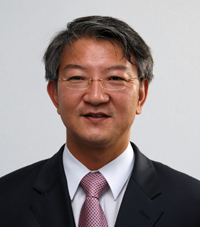 Prof. Sang-Yup Lee Receives Merck Award for Metabolic Engineering
Prof. Sang-Yup Lee of KAIST"s Department of Chemical and Biomolecular Engineering has been chosen as the winner of the 2008 Merck Award for Metabol;ic Engineering established by the world"s leading pharmaceutical and chemical company Merck, KAIST officials said Tuesday, Sept. 16.
The Distinguished Professor of KAIST and LG Chem Chair Professor will receive the award on Sept. 18 during the 7th Metabolic Engineering convention now underway at Puerto Vallarta, Mexico. Prof. Lee will give a commemorative lecture, titled "Systems Metabolic Engineering for Chemicals," at the biannual academic conference. Prof. Lee is the fourth to win the coveted award which is given to the world"s top expert in metabolic engineering with outstanding achievements in the field.
Prof. Lee, 44, who graduated from Seoul National University and earned his master"s and doctoral degrees in chemical engineering from Northwestern University of the United States, is now the dean of the College of Life Science and Bioengineering, KAIST. Since 1994, he has served as the head of the Metabolic and Biomolecular Engineering National Research Laboratory, director of the BioProcess Engineering Center, Director of the Bioinformatics Research Center and Co-Director of the Institute for the BioCentury in KAIST.
Prof. Lee said he was receiving the Merck award "as a representative of KAIST graduates, students and researchers" who have worked with him at the Metabolic Engineering Lab. He added he was happy to see the outcome of bioengineering development projects supported by the Ministry of Education, Science and Technology over the past years was now being recognized by the world"s leading scientific society with the Merck Award.
Metabolic engineering, the art of optimizing genetic and regulatory processes within cells to increase the cell"s production of a certain substance, develops technologies that hold the key to the resolution of the world"s energy, food and environmental problems. The indispensible technology in bioengineering can be applied to the production of biomass to obtain alternative fuel.
Prof. Lee has actively participated in publishing such academic periodicals as Biotechnology Journal (as chief editor), Biotechnology and Bioengineering (deputy editor) and Metabolic Engineering (a member of the editorial committee).
2008.09.17 View 16071
Prof. Sang-Yup Lee Receives Merck Award for Metabolic Engineering
Prof. Sang-Yup Lee of KAIST"s Department of Chemical and Biomolecular Engineering has been chosen as the winner of the 2008 Merck Award for Metabol;ic Engineering established by the world"s leading pharmaceutical and chemical company Merck, KAIST officials said Tuesday, Sept. 16.
The Distinguished Professor of KAIST and LG Chem Chair Professor will receive the award on Sept. 18 during the 7th Metabolic Engineering convention now underway at Puerto Vallarta, Mexico. Prof. Lee will give a commemorative lecture, titled "Systems Metabolic Engineering for Chemicals," at the biannual academic conference. Prof. Lee is the fourth to win the coveted award which is given to the world"s top expert in metabolic engineering with outstanding achievements in the field.
Prof. Lee, 44, who graduated from Seoul National University and earned his master"s and doctoral degrees in chemical engineering from Northwestern University of the United States, is now the dean of the College of Life Science and Bioengineering, KAIST. Since 1994, he has served as the head of the Metabolic and Biomolecular Engineering National Research Laboratory, director of the BioProcess Engineering Center, Director of the Bioinformatics Research Center and Co-Director of the Institute for the BioCentury in KAIST.
Prof. Lee said he was receiving the Merck award "as a representative of KAIST graduates, students and researchers" who have worked with him at the Metabolic Engineering Lab. He added he was happy to see the outcome of bioengineering development projects supported by the Ministry of Education, Science and Technology over the past years was now being recognized by the world"s leading scientific society with the Merck Award.
Metabolic engineering, the art of optimizing genetic and regulatory processes within cells to increase the cell"s production of a certain substance, develops technologies that hold the key to the resolution of the world"s energy, food and environmental problems. The indispensible technology in bioengineering can be applied to the production of biomass to obtain alternative fuel.
Prof. Lee has actively participated in publishing such academic periodicals as Biotechnology Journal (as chief editor), Biotechnology and Bioengineering (deputy editor) and Metabolic Engineering (a member of the editorial committee).
2008.09.17 View 16071 -
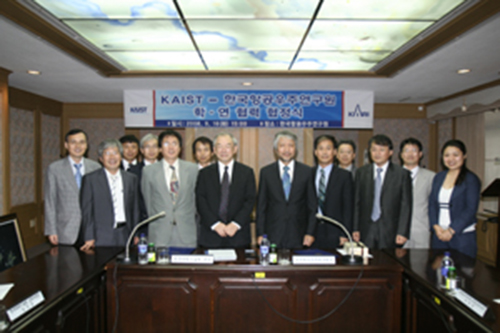 KAIST, KARI to Conduct Joint Research, Exchange Tech Manpower
KAIST and the Korea Aerospace Research Institute (KARI) have agreed to conduct joint researches and exchange technical personnel in order to spur research activities on artificial satellite and other aerospace technology, KAIST announced Wednesday, Sept. 17.
An MOU was signed in a ceremony at the KARI Tuesday, attended by senior officials of the two institutions which both are located in the Daedeok Technopolis in Daejeon City.
Researchers from KARI will participate in KAIST"s interdisciplinary project of "Space Exploratory Engineering" and the two organizations will also jointly take part in the International Lunar Network (ILN), an international moon exploration program, to accelerate development of space technology in Korea.
As a result of the tieup, Dr. Lee So-yeon, Korea"s first astronaut who lived in space for a week aboard a Russian spacecraft this year, will be able to teach and conduct research at KAIST as an adjunct professor. Lee earned her doctorate from KAIST.
2008.09.17 View 15840
KAIST, KARI to Conduct Joint Research, Exchange Tech Manpower
KAIST and the Korea Aerospace Research Institute (KARI) have agreed to conduct joint researches and exchange technical personnel in order to spur research activities on artificial satellite and other aerospace technology, KAIST announced Wednesday, Sept. 17.
An MOU was signed in a ceremony at the KARI Tuesday, attended by senior officials of the two institutions which both are located in the Daedeok Technopolis in Daejeon City.
Researchers from KARI will participate in KAIST"s interdisciplinary project of "Space Exploratory Engineering" and the two organizations will also jointly take part in the International Lunar Network (ILN), an international moon exploration program, to accelerate development of space technology in Korea.
As a result of the tieup, Dr. Lee So-yeon, Korea"s first astronaut who lived in space for a week aboard a Russian spacecraft this year, will be able to teach and conduct research at KAIST as an adjunct professor. Lee earned her doctorate from KAIST.
2008.09.17 View 15840 -
 KAIST Professors Article Featured as Cover Thesis of Biotechnology Journal
An article authored by a research team of Prof. Sang-yup Lee at the Department of Chemical and Biomolecular Engineering and Dr. Jin-Hwan Park at the KAIST Institute for the BioCentury has been featured as the cover thesis of the August 2008 issue of Trends in Biotechnology.
The paper, titled "General strategy for strain improvement by means of systems metabolic engineering," focuses on the application of systems biology for the development of strains and illustrates future prospects. Trends in Biotechnology, published by Cell Press, is one of the most prestigious review journals in the field.
Jin-Hwan Park, the primary author of the research thesis, said that the KAIST team"s research work was expected to provide substantial help to researchers involved in biotechnology industry.
The strategy has been established on the basis of the experiences gained in the actual microbial production process using the systems biology methods which his research team has recently worked on, Prof. Park said.
2008.07.24 View 16431
KAIST Professors Article Featured as Cover Thesis of Biotechnology Journal
An article authored by a research team of Prof. Sang-yup Lee at the Department of Chemical and Biomolecular Engineering and Dr. Jin-Hwan Park at the KAIST Institute for the BioCentury has been featured as the cover thesis of the August 2008 issue of Trends in Biotechnology.
The paper, titled "General strategy for strain improvement by means of systems metabolic engineering," focuses on the application of systems biology for the development of strains and illustrates future prospects. Trends in Biotechnology, published by Cell Press, is one of the most prestigious review journals in the field.
Jin-Hwan Park, the primary author of the research thesis, said that the KAIST team"s research work was expected to provide substantial help to researchers involved in biotechnology industry.
The strategy has been established on the basis of the experiences gained in the actual microbial production process using the systems biology methods which his research team has recently worked on, Prof. Park said.
2008.07.24 View 16431